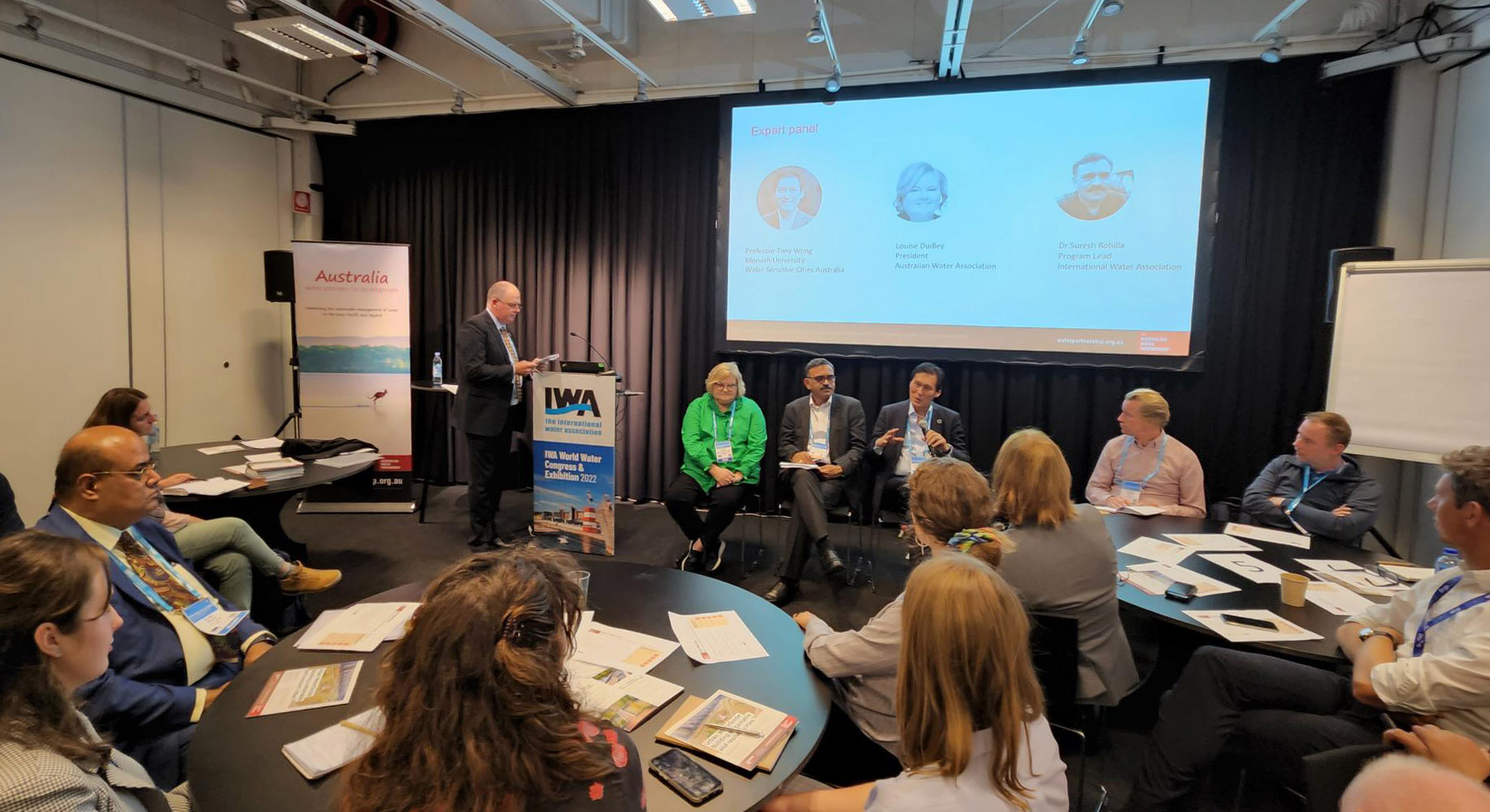Many cities are adopting integrated urban water management approaches to address the urgent water challenges in a way that also delivers the United Nations Sustainable Development Goals and enhances resilience and sustainability by:
- reducing reliance on rainfall fed water supplies and large-scale infrastructure
- incorporating nature-based solutions to improve liveability and sustainability outcomes
- delivering equal access to basic services and being inclusive in planning and governance.
These new integrated water management approaches increase the value of water in cities, and create water systems that can cope with extremes – floods, droughts, heatwaves, pollution. The benefits include ecological, mental and physical health benefits that come from making cities, greener and less polluted, and improving everyone’s access to clean drinking water, reliable sanitation and protection from flooding. Other benefits come from harnessing resources from the urban water cycle – water, energy and nutrients.
Developing and implementing integrated water management can be still be complex and challenging. The CRC for Water Sensitive Cities worked with the Australian Water Partnership and the Institute for Sustainable Futures at the University of Technology Sydney to develop the Urban WaterGuide. Urban water practitioners can use the guide to navigate these challenges and put integrated water management into practice.
The Guide outlines 5 steps that provide practical guidance on how to successfully implement more integrated urban water management. It shows how to do this inclusively, using an inclusion lens of gender equality, disability, Indigenous and social inclusion (GEDSI).

Hot off the press! Find the Urban WaterGuide in our Guides series online: https://t.co/L0CjONgS02@MonashMSDI @UTSISF @crcwsc https://t.co/69KzYbgfd9
— AWP (@WaterPartnersAU) September 13, 2022
The Guide was launched at the IWA World Water Congress by IWA President Tom Mollenkopf along with Michael Wilson (CEO of Australian Water Partnership), Professor Tony Wong (WSCA) and Juliet Willetts (Institute for Sustainable Futures). Australian Water Partnership also conducted a workshop about the Guide, to demonstrate how it can be applied.
“Being able to start at any step in the 5-step framework means practitioners can leverage existing activities to catalyse integrated urban water management outcomes. This significant point of difference between the Urban WaterGuide and other frameworks was very well received at the workshop,” said Professor Tony Wong.
“The many insightful questions from participants at the workshop shows a good depth of understanding about what the Urban WaterGuide aims to catalyse,” he said.
Feedback about the workshop was very positive, with participants commenting on the knowledgeable panel, engaging content and active discussions.





